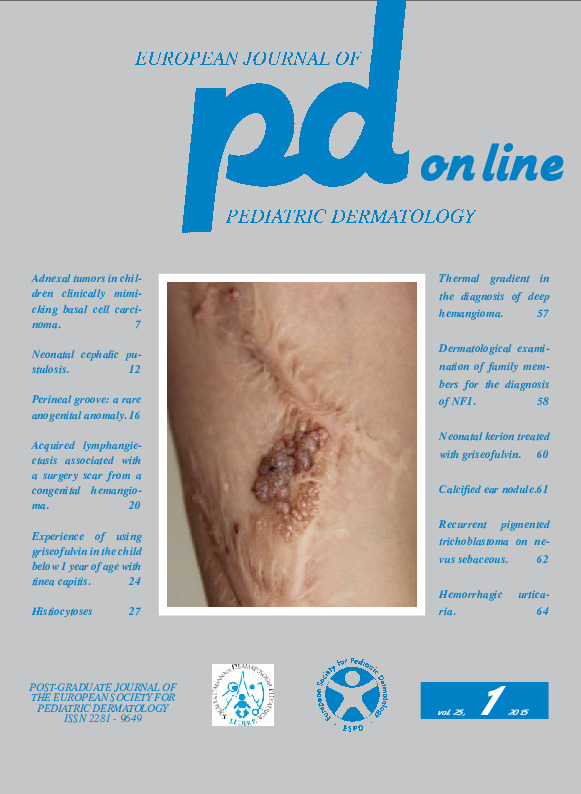Thermal gradient in the diagnosis of deep hemangioma.
Downloads
DOI:
https://doi.org/10.26326/2281-9649.25.1.1092How to Cite
Chieco P., Milano A. 2015. Thermal gradient in the diagnosis of deep hemangioma. Eur. J. Pediat. Dermatol. 25 (1): 57. 10.26326/2281-9649.25.1.1092.
pp. 57
Abstract
Hemangioma with superficial component is easy diagnosed and becomes manifest in the first 2-3 weeks of life. Deep hemangioma, especially when it is not located above a bone crest, is more difficult to diagnose (2) and may become apparent only in the third month of life when it reaches a greater size. Its clinical diagnosis is based on epidemiological criteria – it is the most frequent tumor in the first months of life (1) -, on the history of a growing proliferation in the early months of life, reaching the maximum volume in the fourth month and then remaining stable before starting to slowly regress in years, on the soft consistency, on its greater evidence under conditions that increase the dilation of blood vessels, on its higher temperature due to the increased amount of blood. The thermal gradient between the normal skin and that covering the hemangioma can easily be appreciated with the help of an infrared thermometer.Keywords
Deep hemangioma, Thermal gradient

